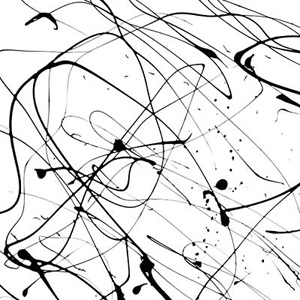 In his March 3rd interview with Ibiza Voice, Martin Müller proudly lists the synths, drum machines, and effects units he used to make Behind, his first album without youANDme partner Daniel Stroeter. Among others, he names: the Waldorf Microwave 1 and Roland Alpha Juno 2, the TR-808 and TR-909, the Jomox Xbase 888, a Verona DRM, a Moogerfooger, a Sherman Filterbank, and various other resonators, compressors, and equalizers. He loves his gear, and every song on Behind begins and ends with it. Whatever the results— jet black Detroit house, dub, ambient noise, or some other variety of electronic music— Martin’s machines matter most. Everything else comes second.
In his March 3rd interview with Ibiza Voice, Martin Müller proudly lists the synths, drum machines, and effects units he used to make Behind, his first album without youANDme partner Daniel Stroeter. Among others, he names: the Waldorf Microwave 1 and Roland Alpha Juno 2, the TR-808 and TR-909, the Jomox Xbase 888, a Verona DRM, a Moogerfooger, a Sherman Filterbank, and various other resonators, compressors, and equalizers. He loves his gear, and every song on Behind begins and ends with it. Whatever the results— jet black Detroit house, dub, ambient noise, or some other variety of electronic music— Martin’s machines matter most. Everything else comes second.
Müller underlines his focus on color and texture from the get-go. After the brief, weightless wash of "Entrance," "Perception" hits with wave after wave of staccato synthesizer sound. Over and over again, the same emphatic pulse pushes through the air, throbbing insistently for every second of the song’s almost six minutes. Riding on the crests of those electrical waves is a foamy mix of vocals, percussive accents, and other sound effects, like field recordings. Some of them pop off the rhythmic background and fizzle out, others get tucked into the mix and work away secretly beneath or within the persistence of the bass drum. But the elements are always simpatico, in some cases just a hair's breadth removed from each other.
This is how Martin works. He hypnotizes first with hammering rhythms and catchy melodies, then woos with slick, but seriously deep textures and sound effects, wrapping them all together in a way that makes taking them apart impossible. Nearly every song proceeds that way: the beat provides the canvas and the textures provide the color, as well as the energy and intrigue. Müller pulls it all off by concentrating on the smallest units. He builds his songs thinking less about form and more about how and where sounds will mingle. All the repetitive passages, small variations, and mirrored rhythms, techno-flavored as they are, pay more homage to tone color, texture, and density than to the almighty beat.
Ambient passages help break the album up and give it some formal variety, although they feel secondary to the rhythm-centric productions. Müller definitely shines brightest when he’s messing with club-approved fare, adding depth and subtracting flash in favor of subtlety. The way he handles the vocal tracks still amazes me. The first time through those vocals were the biggest obstacle to my enjoying the record. Repeat listens quickly removed that obstacle. Thinking about it now, they are a little corny, but Martin uses them to such good effect that it doesn’t matter. By the end of the record they have disappeared into the machines that Müller so adores.
samples:
Read More

